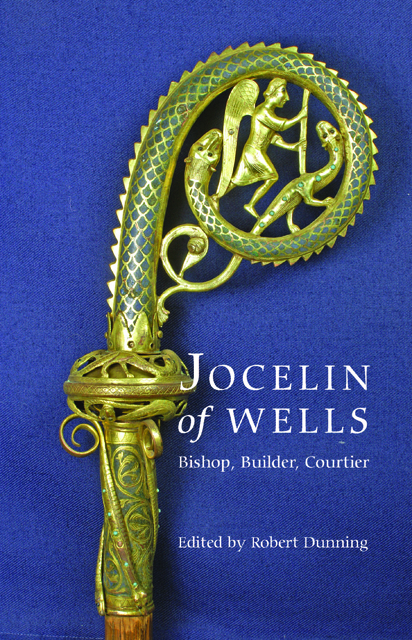6 - Bishop Jocelin and his buildings in Wells
Published online by Cambridge University Press: 02 March 2023
Summary
This chapter seeks to consider Bishop Jocelin’s buildings in Wells from the point of view of buildings archaeology, concentrating on the two prime examples: the cathedral and the Bishop’s Palace. While there is probably surviving fabric from Jocelin’s period in the Old Deanery, and perhaps in other houses to the north of the cathedral, those remains are slight and have not been studied in detail. The other major survival, the fragments of Jocelin’s chamber and chapel at Wookey, lies outside the city. Therefore, what follows is a consideration of Jocelin’s work in the cathedral and palace, first by examining the sequence of construction and building styles in the cathedral, and then to see if anything can be learnt by applying a knowledge of those building styles to the thirteenth-century fabric of the palace.
Jocelin’s building campaign in the cathedral
Early commentators on the building of the cathedral were wont to credit Jocelin with the whole or the greater part of the building. James Thomas Irvine (whose observation was superb, but whose interpretation was seriously flawed) mistakenly believed the cathedral to have been rebuilt from west to east, and credited Jocelin with the quire, rather than the nave and the west front.
It is, however, salutary to realise that in the famous view of the cathedral from Tor woods to the east, hardly anything built during Jocelin’s episcopate can be seen. The east end, chapter house, central tower and Lady Chapel are of the fourteenth century; the western towers are of 1384–94 and 1424+; while the transepts and earliest part of the nave were complete by 1206, when Savaric’s obit was celebrated in St Martin’s chapel in the south transept.
Over the last twenty years the phases of construction of the cathedral have been clarified – though it is likely that Professor Robert Willis had identified them in the 1870s, but failed to record his observations in detail. In order to define Jocelin’s contribution to the building it is necessary first to look briefly at the constructional history of the church under his predecessors, Bishops Reginald and Savaric.
Rebuilding the church prior to Jocelin’s episcopate
Work on the new church must have begun at the east end soon after Reginald’s appointment in 1174, with the single-storey eastern retroquire – just as happened at Salisbury in 1220–25.
- Type
- Chapter
- Information
- Jocelin of WellsBishop, Builder, Courtier, pp. 110 - 122Publisher: Boydell & BrewerPrint publication year: 2010
- 1
- Cited by

